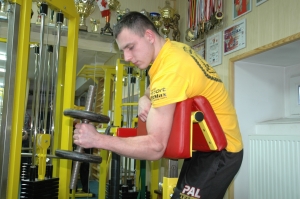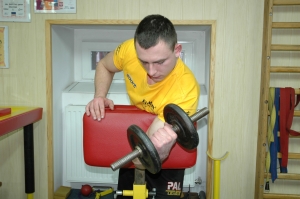Proper execution of technique and exercises depends on many factors. One of the most important ones are the angles between forearm and arm, wrist and forearm and fingers and hand. Not every practitioner realizes the importance of angles versus technique and, above all, safety.
Exercising with proper angles benefits the fighting style by a 10-15 % advantage in a fight. It often happens that a fighter would ignore this issue right from the start of their career. This is a serious mistake. Correct angles are crucial, especially at the beginning of one’s armwrestling journey. Why? Because that’s when most injuries occur, which can put a trainee off the sport for good.
Remember to exercise and fight with proper angles right from the start.
It even happens sometimes that a pro armwrestler will fight with improper angles. Believe me, their careers might have looked a lot different had they learned to keep correct angles from the very beginning. Everyone knows that it’s very hard to change bad habits, once they’re set. Incorrect angles cause disproportions. It can even happen that correcting the angle takes some strength away from one’s technique, and it takes months, even years of work to get back in shape.
CORRECT ANGLES

Correct optimum angle.

Correct acute angle.
A fighter should always keep an acute, optimum angle, from the start to the end of the fight. Remember not to let your arm go further than 90 º.
INCORRECT ANGLES

Incorrect, wide angle.

Incorrect, wide open and dangerous angle.
A practitioner fighting in this position puts his arm in danger of injury and risks losing the fight. In this angle it’s muscles that do all the work, instead of ligaments, which are generally weaker than ligaments. Additionally, this angle deducts from strength.
CORRECT ANGLE IN PRAYER BENCH WORK
UNDERGRIP BICEP CURLS

Every armwrestler should aim to strengthen this angle. Remember that it’s an error to perform this exercise in an angle wider than 90 º.

In the finishing phase of this exercise, the angle between arm and forearm is no more than 75º. In this angle one can hold large weights, which makes it stronger as a result.

This is how proper form looks for this exercise: undergrip bicep curl. Remember to keep the dumbbell parallel to the floor.
HAMMER GRIP BICEP CURLS

Like before, remember to start exercising from 90 º angle to increase force in the arm / forearm angle.

In the last phase of exercise, keep your wrist from going limp. This angle allows for holding large weights, increasing strength.

This is what proper form looks like for hammer grip bicep curls. Remember to keep the dumbbell parallel to the floor.
BICEP CURLS WITH MIDDLE GRIP

A favorite exercise of Europe and World Champion - Rustam Babayev (Ukraine), who is not a fan of two previous exercises. He uses this one as a universal exercise. Is it for everybody? We think not. Like before, remember to start exercising from 90 º angle to increase force in the arm / forearm angle.

In the finishing phase of this exercise, the angle between arm and forearm is no more than 75º. This angle allows for holding large weights, increasing strength.

This is proper form for middle grip bicep curls. Remember to keep dumbbell at a 45 º angle to the floor.
PROPER ANGLE FOR WRIST ROTATIONS
WRIST PRONATION

Wrist supination with rope and weights or regulated pulley, perform from right angle.

In the finishing phase of this exercise, the angle between arm and forearm is no more than 75º. This angle allows for holding large weights, increasing strength.

Begin with wrist turned parallel to the floor.
WRIST SUPINATION

Wrist supination with weights or regulated pulley. Arm rested on table top.

When performing pronation, raise forearm slightly. This will increase pressure on elbow fastenings.
No matter if you like those or other exercises – always remember to perform any exercise with picture-perfect form.
Editorial staff

